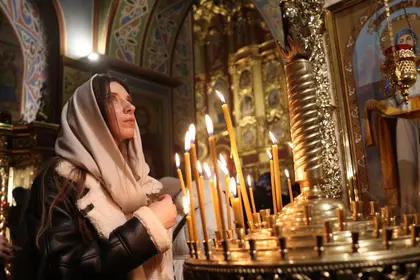Database management company Opendatabot investigated the Unified State Register and the Register of Churches of the Moscow Patriarchate to determine the number of religious institutions in Ukraine associated with the Kremlin.
According to the data obtained, 589 Ukrainian religious communities have moved from the Ukrainian Orthodox Church – Moscow Patriarchate (UOC-MP) to the Orthodox Church of Ukraine (OCU) since the beginning of the full-scale invasion.
JOIN US ON TELEGRAM
Follow our coverage of the war on the @Kyivpost_official.
Most churches in the Kyiv region have made the change (138) followed by Khmelnitsky (125) and Vinnytsia (67).
Presently, 8,193 institutions belonging to the Ukrainian Orthodox Church – Moscow Patriarchate (UOC-MP) continue to work in Ukraine despite a law banning them from doing so (Ukraine’s government is unable to forcefully close their activities).
Just before Russia’s full-scale invasion of Ukraine, amendments to the law “On Freedom of Conscience and Religious Organizations” came into force.
According to the amendments, churches and religious institutions were asked to change their name in the Unified State Register of legal entities in such a way that it is clear when they belong to the Moscow Patriarchate.
Of the total, 99 percent (8,119) have not yet voluntarily indicated that they are part of the Moscow Patriarchate in their names.
If this does not happen on a voluntary basis, then such changes are made forcibly with the following note added to their names: “The Religious Organization Did Not Indicate Its Affiliation to The Russian Orthodox Church (Moscow Patriarchate).”

Religious Freedom in Ukraine Under Moscow’s Rule and Kyiv’s Rule
According to information gathered from the Unified State Register of Legal Entities, only 59 religious institutions changed their names to indicate a connection with the Russian Federation.
All such actions took place during the first year of the full-scale invasion.
Of those churches that changed their name, eight were transferred to the OCU.
Currently, the largest number of religious institutions associated with the Kremlin are recorded in the Donetsk region (683) and the Vinnytsia region (534), followed by the Dnipro region (527 Russian churches) and the Khmelnytskyi region (506).
You can also highlight the text and press Ctrl + Enter










